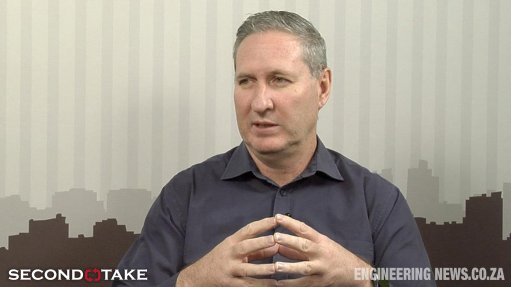Opinion: Breathing fresh air into old coal power stations
In this opinion piece, Wärtsilä South African business development manager Wayne Glossop writes about the benefits of converting old coal-fired power plants to modern gas engine power plants.
AGL Energy Limited undertook a successful transformation of an old coal plant to a modern flexible gas engine power plant to support more renewables into the South Australian power system
Eskom’s latest Request for Information to propose new uses for decommissioned coal-fired power stations, is an opportunity to devise creative solutions to what would otherwise become a major financial burden for the utility and result in thousands of jobs lost.
Four of Eskom’s coal-fired power stations are slated for decommissioning in the short term: Komati, Camden, Grootvlei and Hendrina. Komati is now 59 years old; Camden is 53, Grootvlei is 51 and Hendrina is 50.
These four power plants, like most of Eskom’s current fleet, were all built in the decades when construction of coal-fired and nuclear power was surging around the world. They are now close to the end of their design life and are becoming obsolete in a world moving to cheaper renewable technologies.
Eskom faces the mammoth task of decommissioning not only these four, but several other coal power stations over the next few years. These plants cannot be revived by replacing the turbines or boilers. Closing the power stations will result in a substantial rehabilitation liability for Eskom, which it can ill afford. Each of these Eskom power stations is responsible for 600-1,000 jobs, with a multiplier effect on the local communities, which the country can sorely afford to lose.
But Eskom is by no means in a unique dilemma. The average age of European coal-fired power plants is 25-35 years, and, in the US, it is about 43 years, so there is likely to be a wave of plant decommissioning’s globally in the next few years.
“The economic costs of decommissioning are certain to be significant and will increase as more assets reach the end of their life, but few operators have put aside sufficient funds to effectively decommission their assets,” Diletta Colette Invernizzi and co-authors wrote in an article on “Coming to terms with the challenges of decommissioning” in the September issue of Energy Policy.
However, these four old power station sites still have value. That value lies in their buildings, the extensive land area they occupy (with proximity to water sources), and their geographical location: close to electricity distribution infrastructure and the pipeline bringing gas to the Highveld from Mozambique. These features make them ideally suited to another form of power generation. In Australia, Wärtsilä has installed a gas power plant on the site of a former coal-fired power station.
Will a gas power plant or a solar energy park with battery storage generate the same number of jobs as a coal-fired plant? The answer is no. The solution to maximising the number of jobs from these sites and making communities sustainable in the long term is probably to make them multi-functional. So the solution could be to combine energy generation, power storage and synergistic activities such as premises for start-up local businesses and training facilities. They could become sites where universities can collaborate with Eskom or the new operators of generation plants to conduct courses on clean power technologies. Those trainees could be eligible for job opportunities in the same area, at one of the generation plants, or could set up their own service businesses.
The key is to take a smart and effective approach to creating an energy co-creation environment that caters for all links in the value chain – which is more than simply turning an obsolete coal-fired power station into another kind of power generation facility.
Elsewhere, repurposing old power station buildings has mainly focused on their property value. For example, Battersea Power Station on the Thames in London is being redeveloped as a mixed-use precinct with residential, business and leisure nodes. In Johannesburg, the old Turbine Hall in Newtown was redesigned as a conference and business centre, housing the head office of global gold miner AngloGold Ashanti. But both of those power stations were located in what is now a central business district.
The sector that is likely to show most interest in repurposing these four Mpumalanga power stations is independent power producers (IPPs), and specifically those companies that have the imagination to “think outside the box”. They will have to consider broader objectives than the normal IPP project and be able to look at the business opportunities on a number of different levels across the value chain. A public-private partnership has clear social, economic and environmental goals to meet.
This is an opportunity to show how sites designed around an archaic, historical technology can be transformed into world-class, sustainable clean energy providers. These sites tick all the boxes for a facility providing solar/gas power with storage that can continue supporting local communities while feeding cheap power into the grid. They offer the necessary land, water, skills and access to the transmission infrastructure. While Mpumalanga has historically been the heart of South Africa’s coal-fired power network because of its extensive coal deposits, it also lends itself to both solar and gas power generation.
Comments
Press Office
Announcements
What's On
Subscribe to improve your user experience...
Option 1 (equivalent of R125 a month):
Receive a weekly copy of Creamer Media's Engineering News & Mining Weekly magazine
(print copy for those in South Africa and e-magazine for those outside of South Africa)
Receive daily email newsletters
Access to full search results
Access archive of magazine back copies
Access to Projects in Progress
Access to ONE Research Report of your choice in PDF format
Option 2 (equivalent of R375 a month):
All benefits from Option 1
PLUS
Access to Creamer Media's Research Channel Africa for ALL Research Reports, in PDF format, on various industrial and mining sectors
including Electricity; Water; Energy Transition; Hydrogen; Roads, Rail and Ports; Coal; Gold; Platinum; Battery Metals; etc.
Already a subscriber?
Forgotten your password?
Receive weekly copy of Creamer Media's Engineering News & Mining Weekly magazine (print copy for those in South Africa and e-magazine for those outside of South Africa)
➕
Recieve daily email newsletters
➕
Access to full search results
➕
Access archive of magazine back copies
➕
Access to Projects in Progress
➕
Access to ONE Research Report of your choice in PDF format
RESEARCH CHANNEL AFRICA
R4500 (equivalent of R375 a month)
SUBSCRIBEAll benefits from Option 1
➕
Access to Creamer Media's Research Channel Africa for ALL Research Reports on various industrial and mining sectors, in PDF format, including on:
Electricity
➕
Water
➕
Energy Transition
➕
Hydrogen
➕
Roads, Rail and Ports
➕
Coal
➕
Gold
➕
Platinum
➕
Battery Metals
➕
etc.
Receive all benefits from Option 1 or Option 2 delivered to numerous people at your company
➕
Multiple User names and Passwords for simultaneous log-ins
➕
Intranet integration access to all in your organisation


















